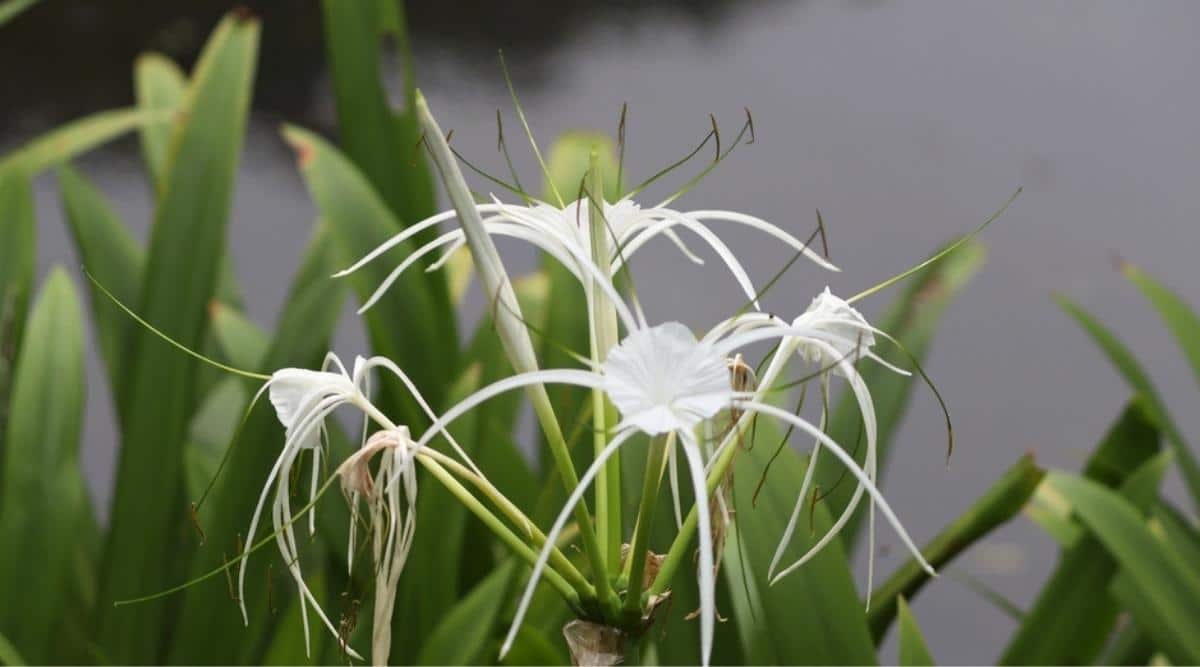
Spider lily, also known as Hymenocallis, is a fascinating plant that captivates with its unique beauty and intriguing characteristics. This versatile plant belongs to the Amaryllidaceae family and is native to tropical and subtropical regions around the world.
While spider lilies may not be as well-known as other popular flowering plants, they have their own distinct charm and boast several surprising facts that make them worth exploring. From their mesmerizing funnel-shaped blossoms to their ability to thrive in various environments, spider lilies continue to intrigue botanists and plant enthusiasts alike.
In this article, we will dive into 11 surprising facts about spider lilies that shed light on the hidden wonders of this remarkable plant.
Key Takeaways:
- Spider lilies are not true lilies, but they have stunning flowers and attract pollinators. They can be propagated through bulbs and are symbolic in Asian culture.
- Spider lilies are resilient, long-lived perennials with different varieties. They are attractive to hummingbirds and have potential medicinal properties.
Spider Lilies Are Not True Lilies
Contrary to their name, spider lilies (Hymenocallis) are not actually true lilies. They are members of the Amaryllidaceae family and closely related to amaryllis and daffodils. However, their unique appearance and stunning flowers make them a popular choice among gardeners and flower enthusiasts.
Spider Lilies Are Native to the Americas
Spider lilies are native to the Americas, particularly tropical and subtropical regions. They can be found in various countries, including the United States, Mexico, Brazil, and Colombia. These resilient plants have adapted to different climates and can thrive in both moist and dry conditions.
Spider Lilies Have Striking Flower Structures
One of the most distinctive features of spider lilies is their unique flower structures. The flowers typically have long, slender petals that curve backward, resembling spider legs. They come in a range of colors, including white, yellow, and pink. The elegant and eye-catching blooms make spider lilies a favorite in gardens and floral arrangements.
Spider Lilies Attract Pollinators
Spider lilies have evolved to attract pollinators such as bees and butterflies. The fragrant flowers emit a sweet scent that lures these beneficial insects. As they land on the flowers in search of nectar, they inadvertently help in the plant’s reproduction by carrying pollen from one flower to another.
Spider Lilies Can Be Propagated Through Bulbs
Propagation of spider lilies is commonly done through bulbs. These underground storage structures can be divided to create new plants. It’s best to divide the bulbs during the dormant season and ensure that each division has healthy roots and shoots. This method allows gardeners to expand their spider lily collection or share them with others.
Spider Lilies Are Symbolic in Asian Culture
In Asian cultures, spider lilies hold symbolic meanings. In Japan, they are associated with death and are often planted near graveyards. On the other hand, in Chinese culture, spider lilies represent good fortune and are believed to ward off evil spirits. These cultural associations add to the intrigue and allure of these fascinating flowers.
Spider Lilies Are Resilient Plants
Spider lilies are known for their resilience and ability to adapt to various growing conditions. They can tolerate both full sun and partial shade, making them versatile choices for gardens. Additionally, spider lilies can withstand periods of drought and can thrive in moist soils, making them low-maintenance plants for many gardeners.
Spider Lilies Are Attractive to Hummingbirds
Hummingbirds are highly attracted to the vibrant blooms of spider lilies. The trumpet-shaped flowers and their nectar-rich centers provide a food source for these tiny, fast-flying birds. By planting spider lilies in your garden, you can create a welcoming habitat for these beautiful and energetic creatures.
Spider Lilies Are Medicinal Plants
In traditional medicine, certain species of spider lilies have been used for their medicinal properties. They are believed to have anti-inflammatory and antifungal properties, among others. However, it’s important to note that proper scientific research is still ongoing to fully understand the potential benefits of spider lilies.
Spider Lilies Are Long-Lived Perennials
Spider lilies are long-lived perennials, meaning they can continue to bloom year after year. With proper care and maintenance, they can thrive for many seasons, bringing beauty and color to your outdoor space. Their resilience and enduring nature make them a wonderful addition to any garden or landscape.
Spider Lilies Have Different Varieties
There are several different varieties of spider lilies, each with its own unique characteristics. Some notable varieties include the Hymenocallis caribaea, which has yellow flowers and can grow up to two feet tall, and the Hymenocallis festalis, also known as the “Peruvian daffodil,” which features striking white blooms. These diverse varieties offer options for gardeners to choose from, ensuring a wide range of colors and forms in their gardens.
Conclusion
In conclusion, Spider Lilies are fascinating and unique plants with several surprising qualities. From their striking appearance to their medicinal properties, Spider Lilies have captured the interest of botanists and garden enthusiasts alike. Whether you’re looking to add a touch of exotic beauty to your garden or want to explore the rich history and cultural significance of these flowers, Spider Lilies are undoubtedly worth considering. With their ability to thrive in various climates and their contributions to ecological balance, these plants are not only aesthetically pleasing but also important for the environment. So, next time you come across a Spider Lily, take a moment to appreciate its beauty and marvel at the fascinating facts that make it so extraordinary.
FAQs
1. What are Spider Lilies?
Spider Lilies, scientifically known as Lycoris, are a group of perennial flowering plants native to several parts of Asia. They are characterized by their striking flowers with elongated, spider-like petals.
2. How do Spider Lilies get their name?
Spider Lilies get their name due to the long, delicate petals that resemble spider legs. The unique shape and structure of the flowers make them stand out in any garden or landscape.
3. What is the significance of Spider Lilies in different cultures?
Spider Lilies hold cultural significance in various regions. In Japan, they are associated with death and are often planted near graves. In China, they symbolize a reunion and are commonly seen during the Mid-Autumn Festival.
4. Are Spider Lilies easy to grow?
Spider Lilies are generally low-maintenance and easy to grow. They prefer well-draining soil and thrive in full sunlight or partial shade. However, it’s important to note that they may take a few years to bloom after planting.
5. Do Spider Lilies have any medicinal properties?
Yes, Spider Lilies have various medicinal properties. In traditional Chinese medicine, the bulbs of certain Spider Lily species are used to alleviate pain, reduce inflammation, and promote blood circulation.
6. Can Spider Lilies be grown in containers?
Yes, Spider Lilies can be grown in containers. They have shallow root systems, making them suitable for container gardening. Ensure that the container has good drainage and provide adequate sunlight and water.
7. Are Spider Lilies toxic to pets?
Yes, Spider Lilies are toxic to pets, particularly dogs and cats. All parts of the plant, including the bulbs, leaves, and flowers, contain toxins that can cause illness if ingested. It is important to keep them out of reach of pets.
8. How long do Spider Lilies bloom?
Spider Lilies typically bloom for a short period of time, usually around one to two weeks. The exact duration of the bloom may vary depending on the species, environmental conditions, and care provided.
9. Can Spider Lilies be divided and propagated?
Yes, Spider Lilies can be divided and propagated. This can be done during their dormant period, which is typically in late summer or early autumn. The bulbs can be carefully separated and replanted in suitable soil.
10. Do Spider Lilies attract pollinators?
Yes, Spider Lilies are known to attract pollinators such as bees, butterflies, and hummingbirds. The vibrant colors and enticing fragrance of the flowers make them irresistible to these beneficial creatures.
11. Are Spider Lilies suitable for all climates?
Spider Lilies are adaptable to a range of climates, but they prefer temperate to subtropical conditions. They can be grown successfully in USDA hardiness zones 7 to 10, though specific species may have different requirements.
Spider lilies captivate with their unique beauty, but they're not alone in the world of intriguing plants. Nerine flowers also hold surprising traits waiting to be explored. Crinum lilies, too, offer a wealth of fascinating characteristics to uncover. Delving into the facts about these enchanting blooms will reveal even more botanical wonders.
Was this page helpful?
Our commitment to delivering trustworthy and engaging content is at the heart of what we do. Each fact on our site is contributed by real users like you, bringing a wealth of diverse insights and information. To ensure the highest standards of accuracy and reliability, our dedicated editors meticulously review each submission. This process guarantees that the facts we share are not only fascinating but also credible. Trust in our commitment to quality and authenticity as you explore and learn with us.


